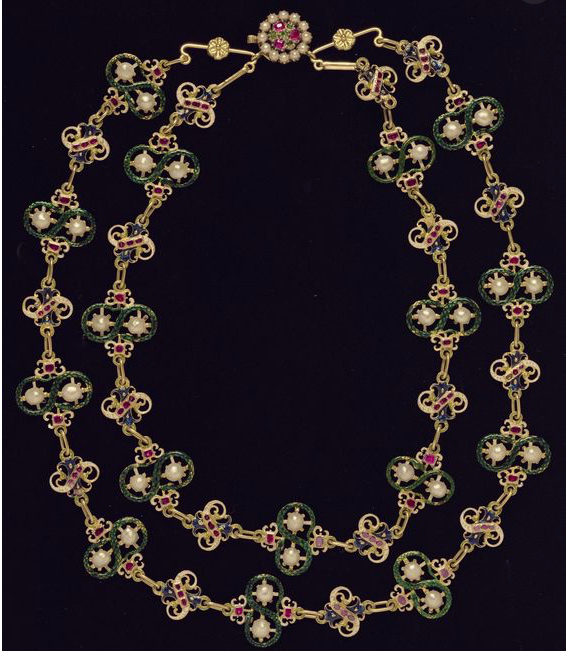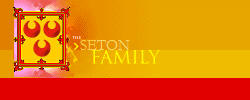|
It was George, 6th Lord Seton, under
James V, who was responsible for the splendid re-creation of the
Seton House, and Mary de
Guise, the French wife of Scotland's King James V, was often
present.
Prior to this, the Seton's had been much involved
in the affairs of Scotland's Royal Family, having the privilege of
their presence on many occasions, over successive generations,
with the family's munificent tastes being much sought after by the
Scotland's Monarch's as a place of relaxation and refuge.
 The Palace
continued to be enlarged to become a more commodious residence
to serve the Royal Court, with a military character
and Italian and French styling and courtyards. However it wasn't
until after the "rough wooing" by England's King Henry VIII that
it became known as the "Palace of Seton": the magnificent Palatial
gallo-scottish residence by the 6th Lord Seton, and continued by
his son and heir, the famed
George, 7th Lord Seton, and continued still by their heirs the 1st and 3rd Earls of
Winton. The Palace
continued to be enlarged to become a more commodious residence
to serve the Royal Court, with a military character
and Italian and French styling and courtyards. However it wasn't
until after the "rough wooing" by England's King Henry VIII that
it became known as the "Palace of Seton": the magnificent Palatial
gallo-scottish residence by the 6th Lord Seton, and continued by
his son and heir, the famed
George, 7th Lord Seton, and continued still by their heirs the 1st and 3rd Earls of
Winton.
George 7th Lord (called 5th of that name, referring
to that of 'George') "repaired the forepart of the house
of Seton, and especially that room called Samson's Hall (40 feet
in height), which he adorned with a roof of curious structure,
whereupon are twenty-eight large achievements, being those of
Scotland, France, Lorraine, and the noble families that were
allied to his family, curiously embossed and illuminate — the
most exact pieces of armories that are to be met with..."
His
younger half-sister Mary Seton (1549–1615), served as courtier
to Queen Mary Stuart. She was the daughter of George Seton, 6th
Lord Seton and Marie Pyeris, a French-born lady-in-waiting to
Marie de Guise, consort of King James V of Scotland. As a child,
Mary Seton became a lady-in-waiting to the young Mary, Queen of
Scots, along with three other girls of similar age and of a
similar standing in Scots society.
They were famously
known as "The Four Marys": she and Mary Beaton, Mary Fleming and
Mary Livingston. They were chosen by Marie de Guise, with the
exception of Mary Fleming, for their Franco-Scottish parentage.
The Four Marys accompanied Queen Mary to France where she wed
the Dauphin.
Mary Seton was the only one of the four not to marry, and
continued all of her life in the unswerving service with Queen
Mary, in France, Scotland and during her captivity in England.
In her later life, aged with her Queen, she retired to the
Convent at Rheims in France where Renée de Guise her beloved
Queen's aunt was Abbess, and died there in 1615.
| 
